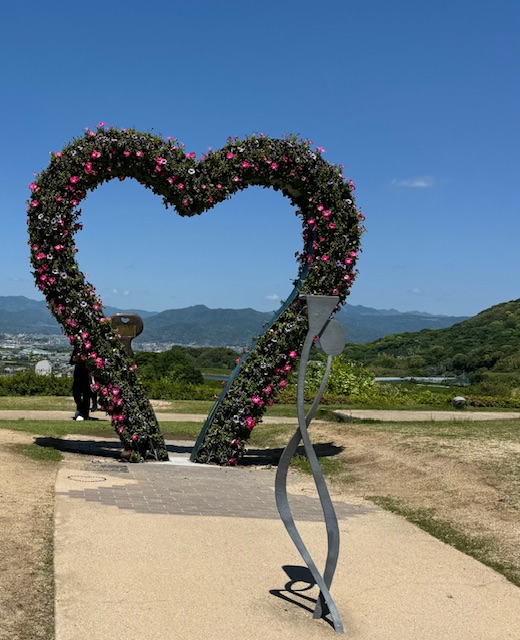A heart shaped topiary installation at a lookout in Ehime prefecture.
S
acred: the power, being, or realm understood by religious persons to be at the core of existence and to have a transformative effect on their lives and destinies.
Many things are designated as sacred: buildings, animals, lands, and foods. People do so in adherence to spiritual or religious law. Who makes the call to say this thing or that object is sacred? it is a question that came to my mind while walking. Should I honor, accept, and act accordingly to what is deemed to be sacred when what is not deemed sacred is….. me?
In my heart and mind
in this earthly space and time
I am sacred too
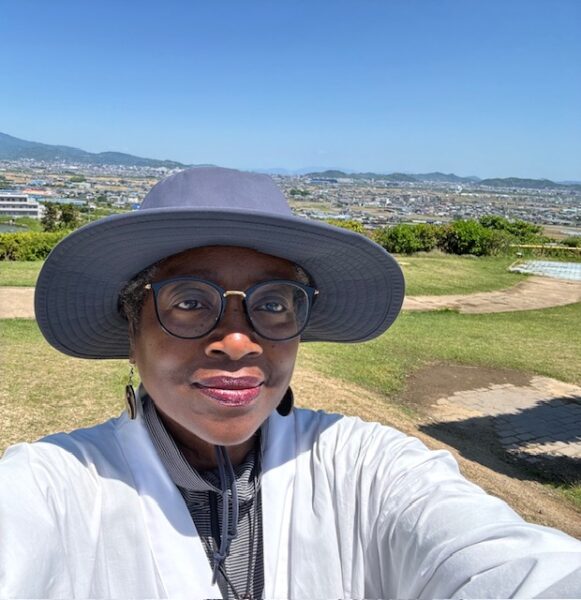
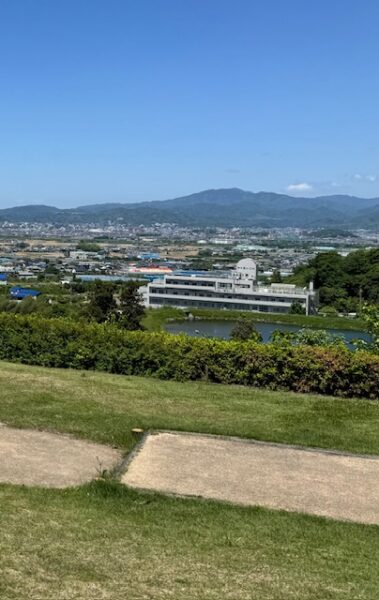
Divine Cypress
Cypress trees, also known as hinoki, were used to construct shrines. palaces, onsens, and temples.
In Japan, it is regarded as high-quality timber. It has a pleasant, relaxing scent, and pinkish color. Importantly, the wood is highly rot-resistant.
The hinoki used for building Ise Shrine, are called go-shin-boku or divine trees.
Giant cypress trees grow in the forests surrounding and leading to the temple.
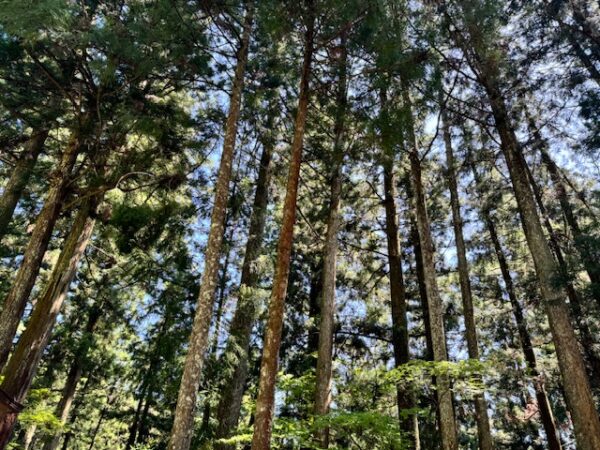
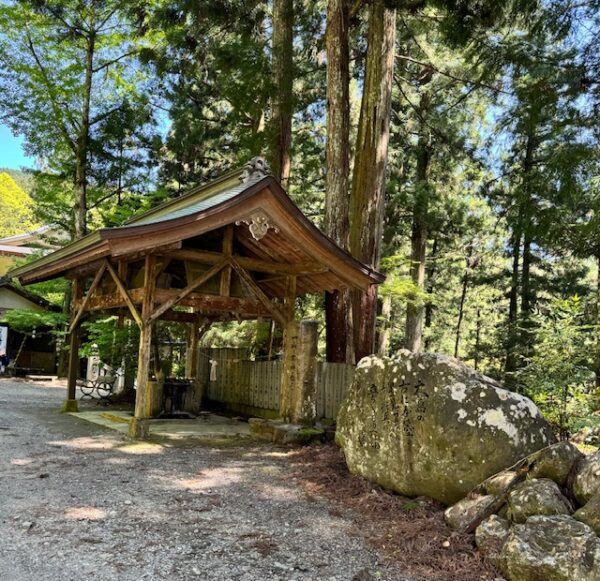
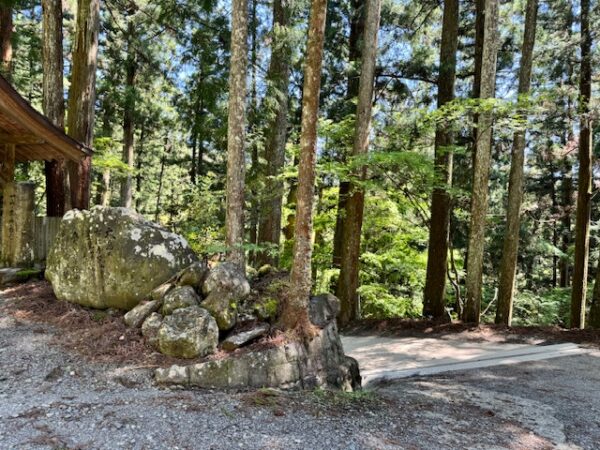
44 Daiho-ji
Temple of the Great Treasure
Built in 701, the temple was burned down several times through the centuries and rebuilt. Wood and timber, though susceptible to fire, were used for rebuilding. Wood was easy to obtain from forests and other demolished structures. Thus, the material was considered sustainable to a degree until threatened with overuse.
As early as the beginning of the 17th century, overuse of timber was addressed by regulation .
Many modern temple reconstructions were completed with stone or concrete as protection against fire and earthquakes. Stone structures provide highly rated storage protection for religious writings and relics.
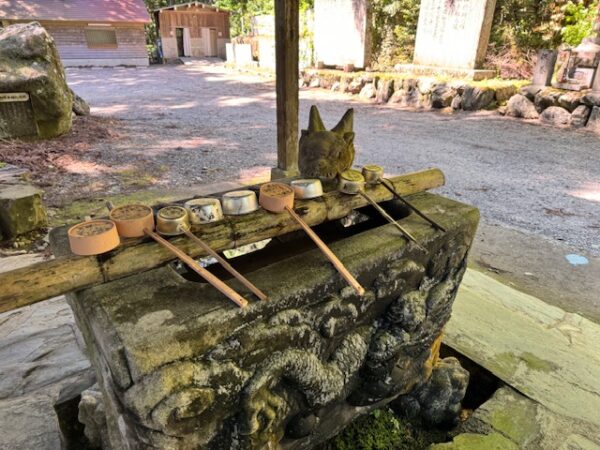
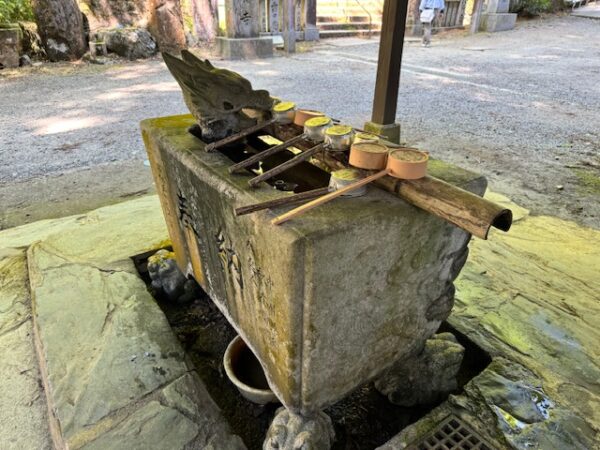
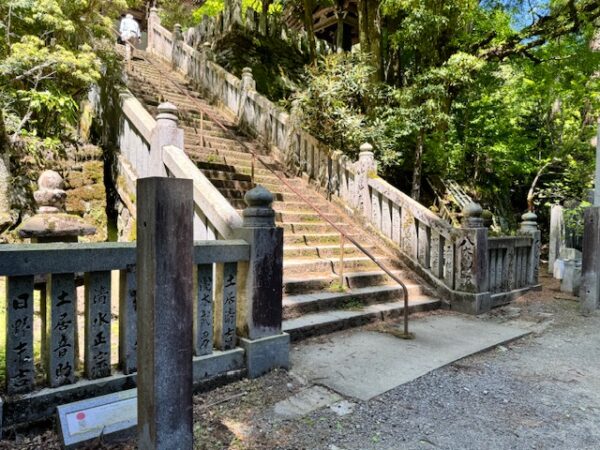
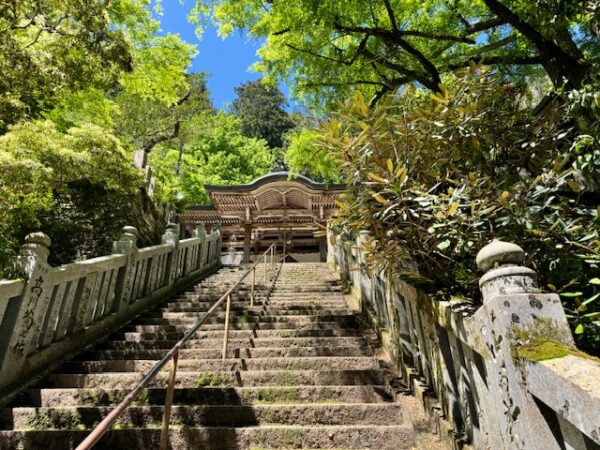
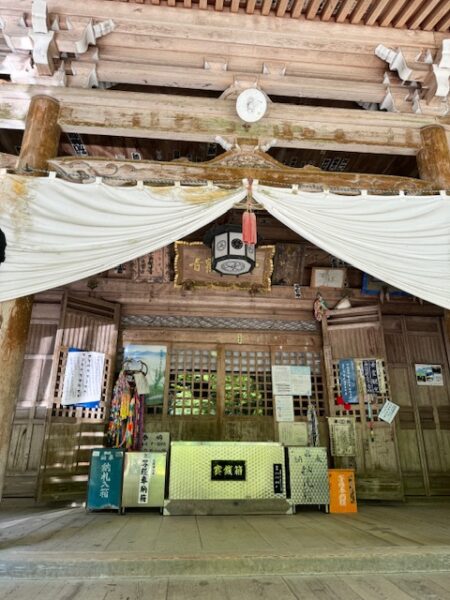
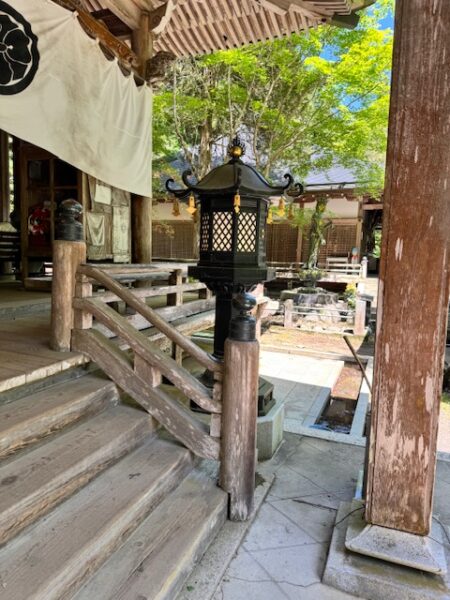
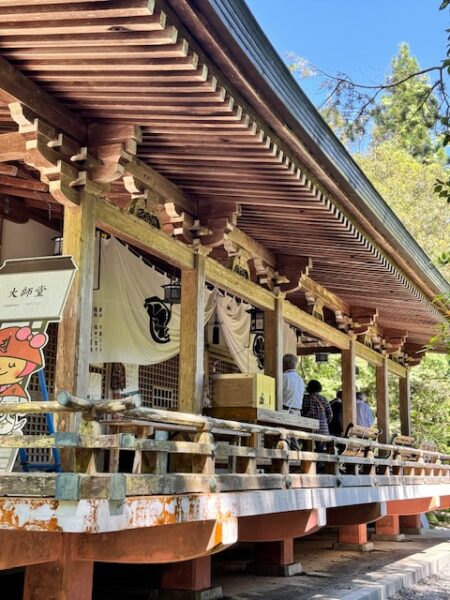
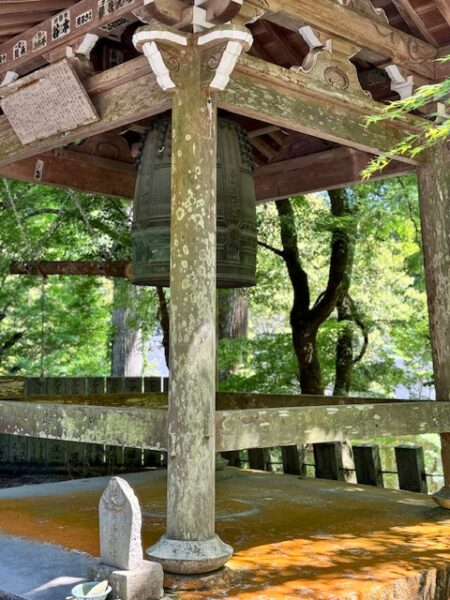
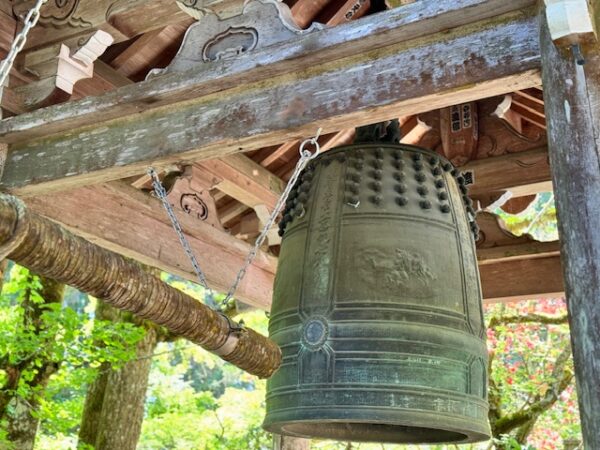
Temples are an integral part of Japanese life. Many people visit them to practice, pray, and learn about Buddhism.
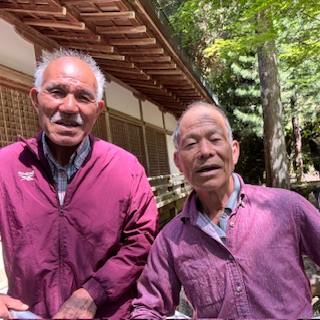
These old friends were visiting several temples for the day.
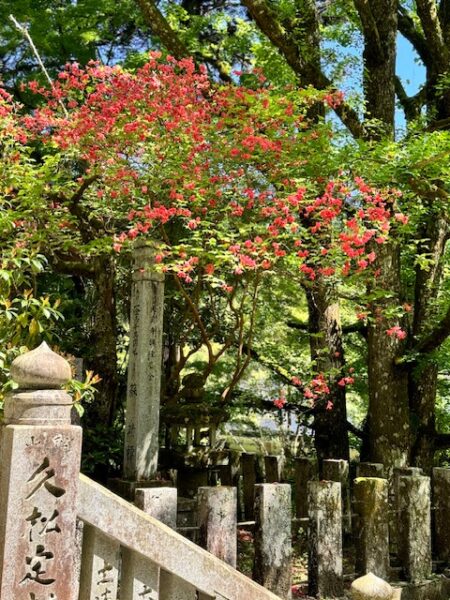
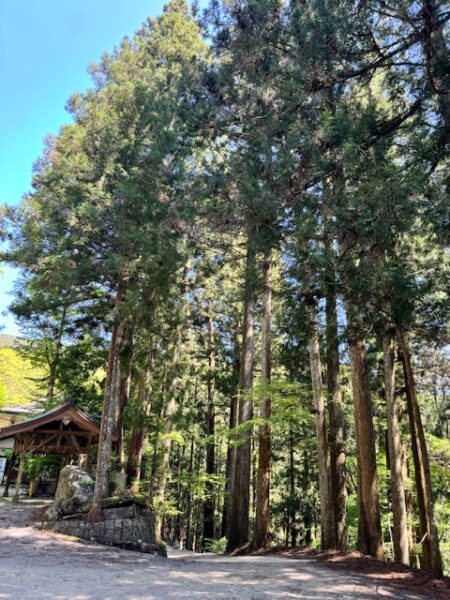
More cypress trees.
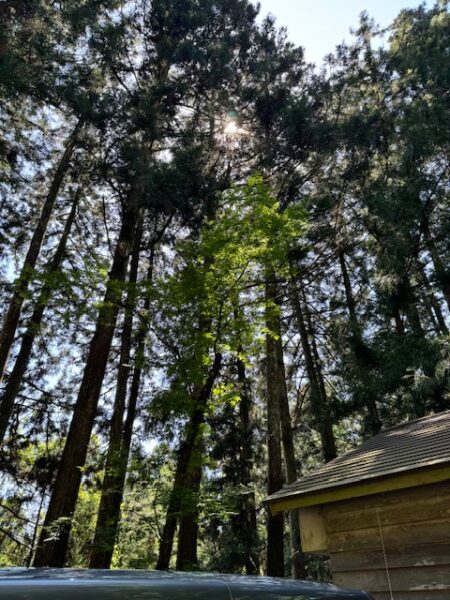
•
45 Iwaya-ji
Temple of the Cave in the Rock
At an altitude of 585 m, the temple is one of the nansho of Ehime. A nansho is a perilous pass on a route or journey. Holy men once performed their religious disciplines in the hillside cliffs. Ohenro aim to do the same.
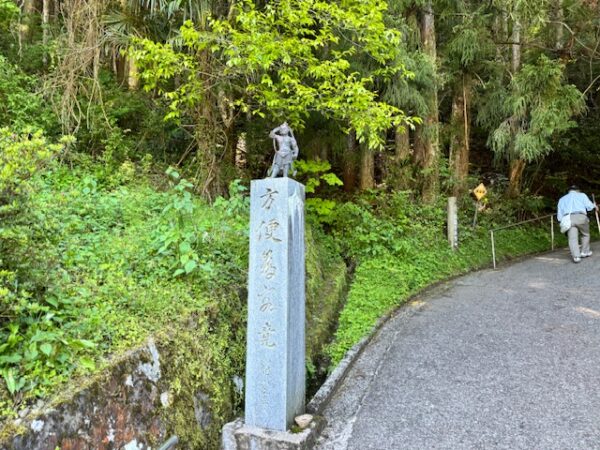
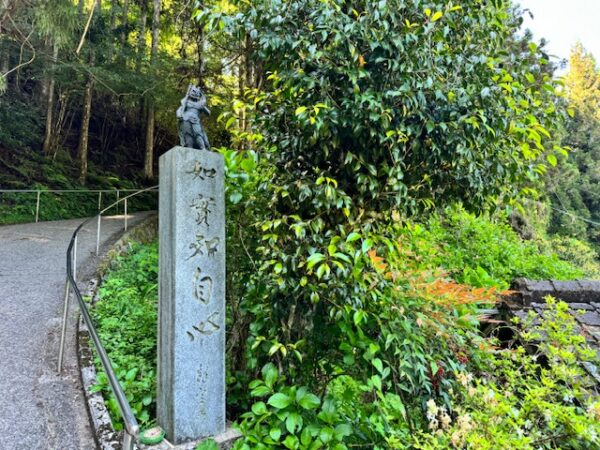
Stone pillars topped with small Niō guardians straddle the entrance. Ahead is the main gate.
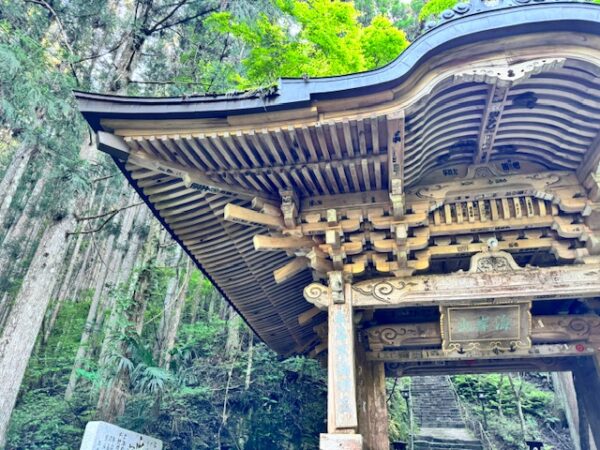
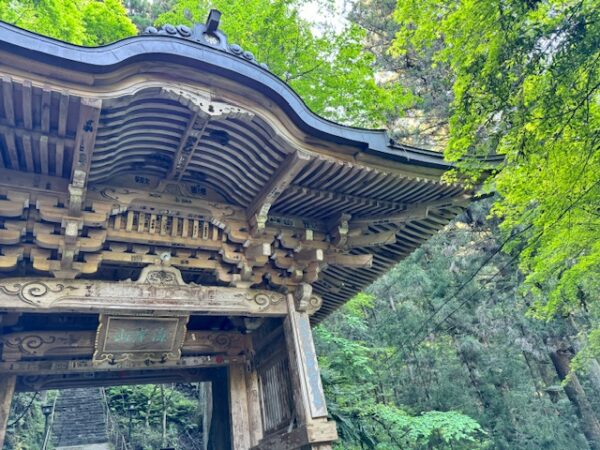
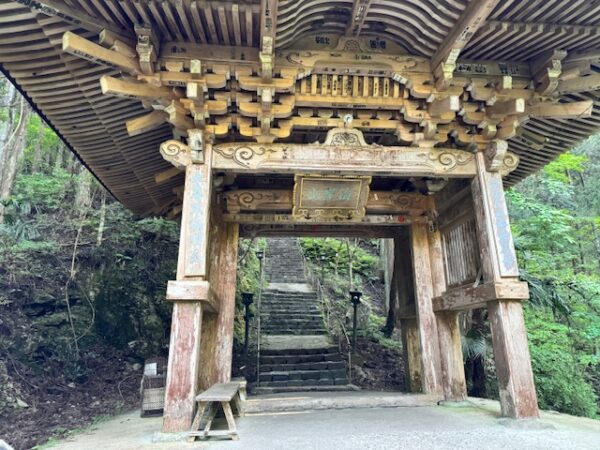
The mountain path is a steep climb through the woods.
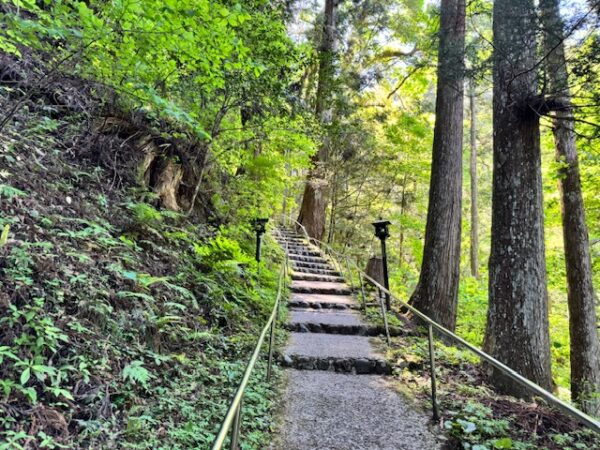
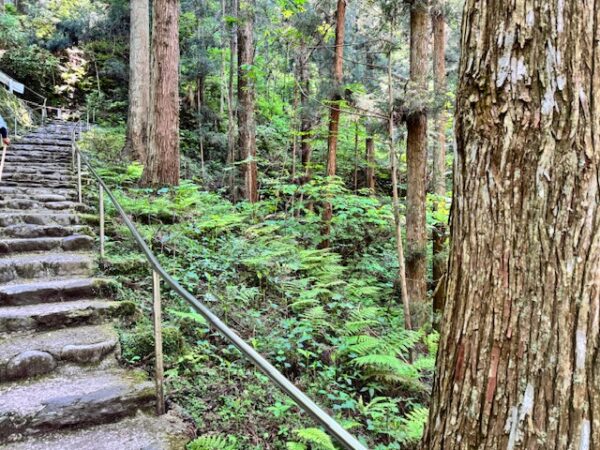
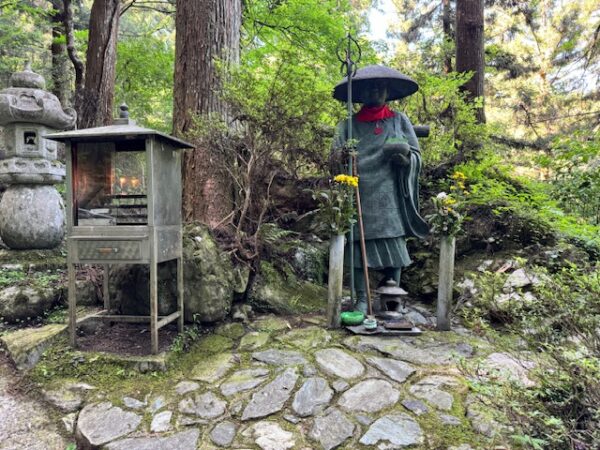
Those who can’t climb any higher worship at the statue of Kukai.
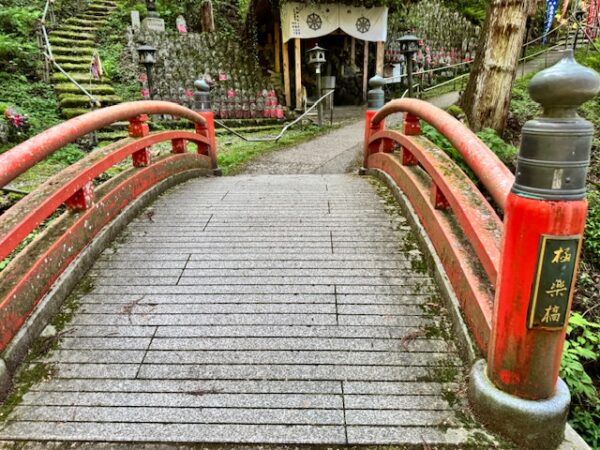
If you go further, rows of stone Buddha water child statues stand close together across the red bridge.
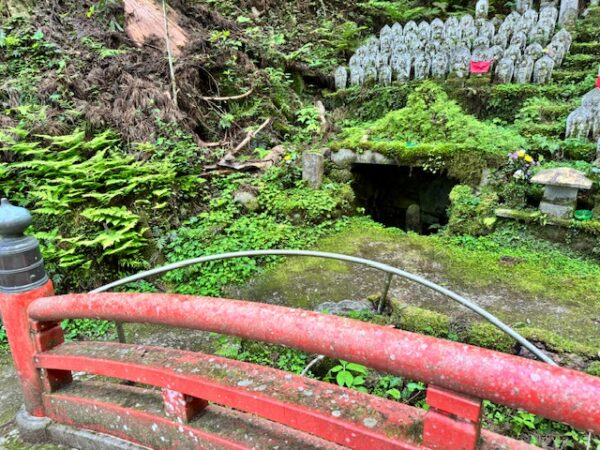
The Jizō is for the spirits of miscarried, stillborn, or aborted children.
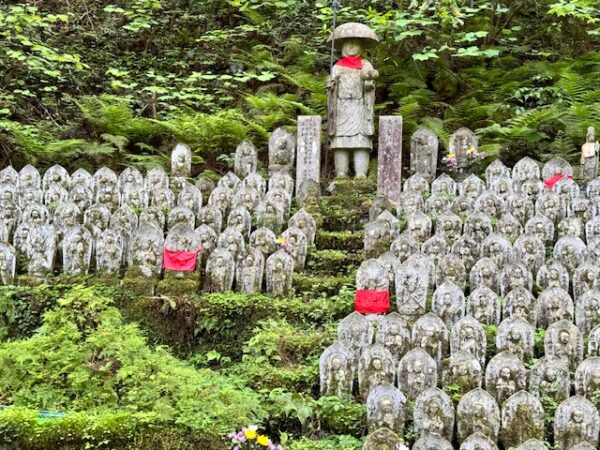
It is a solemn and comforting place for mothers and fathers who lost children.
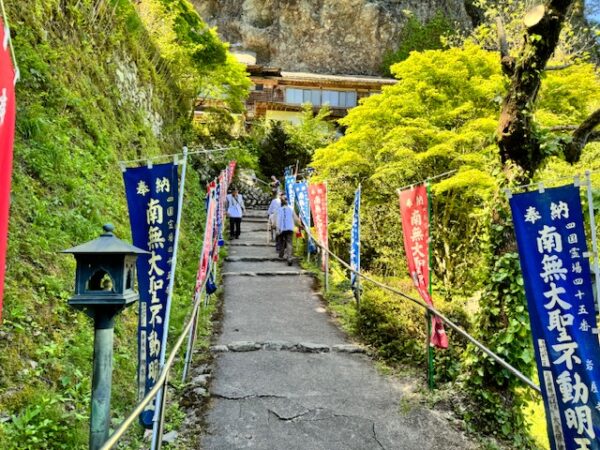
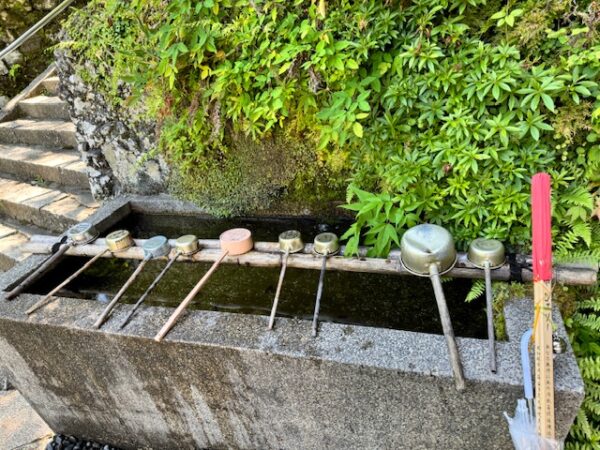
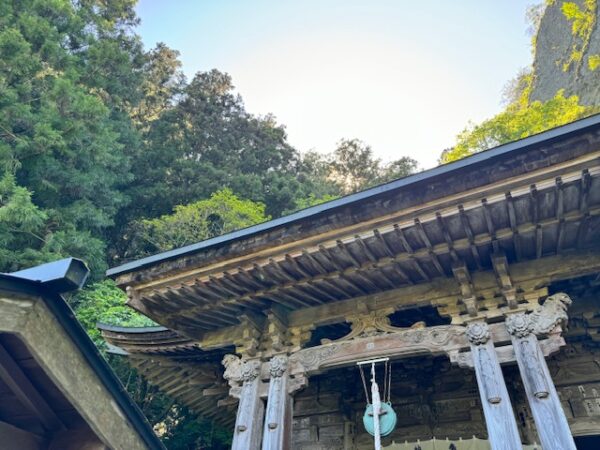
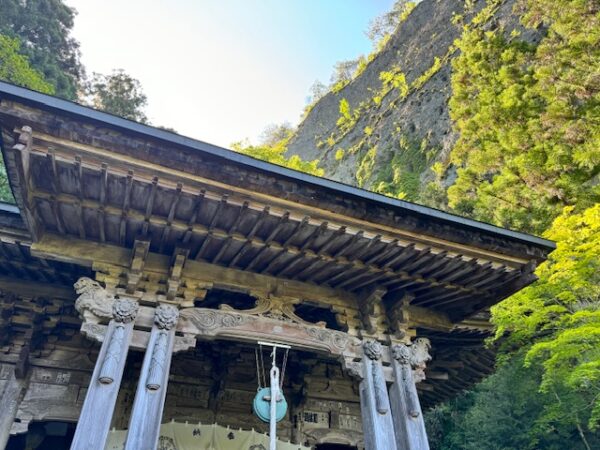
Click on video:
I know those guys! We meet again.
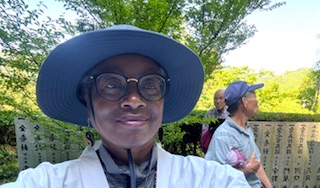
Did they follow me from the last temple?
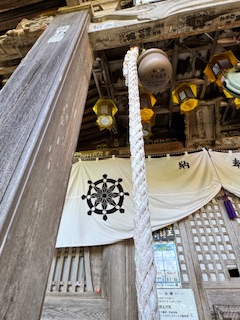
The junior temple rivals the main one in size.
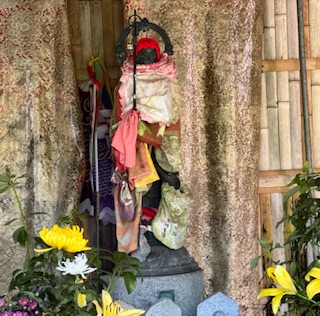
The home of the priest is built against a cliff that rises straight up. The cliff is pitted with holes.
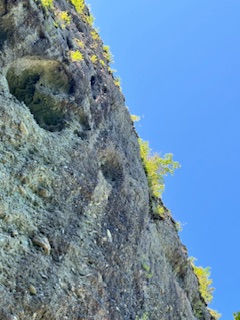
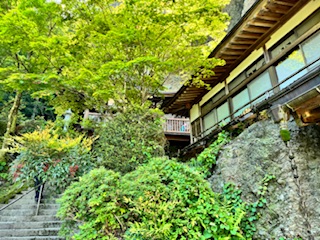
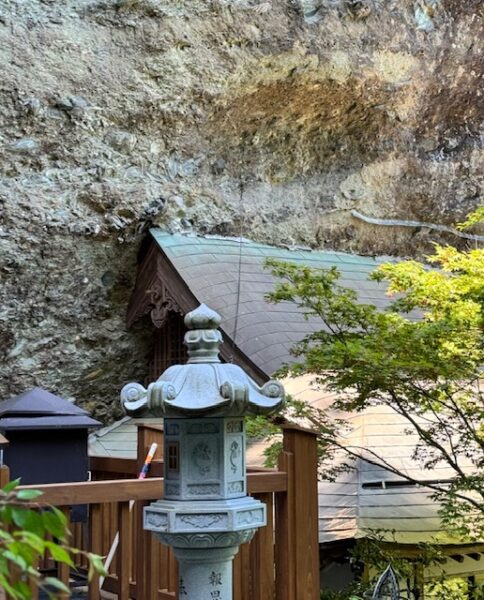
Cave in the Rock
In many languages, cave is another word for temple. Both play a crucial role in unraveling and preserving many secrets of human and religious history.
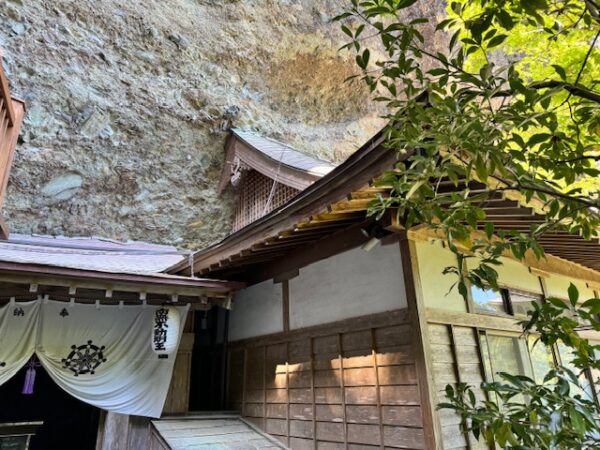
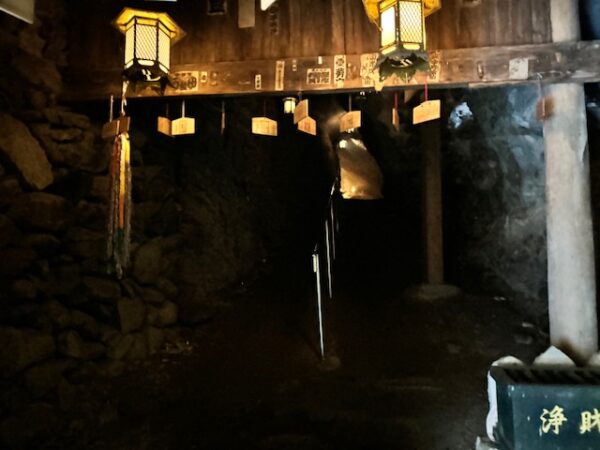
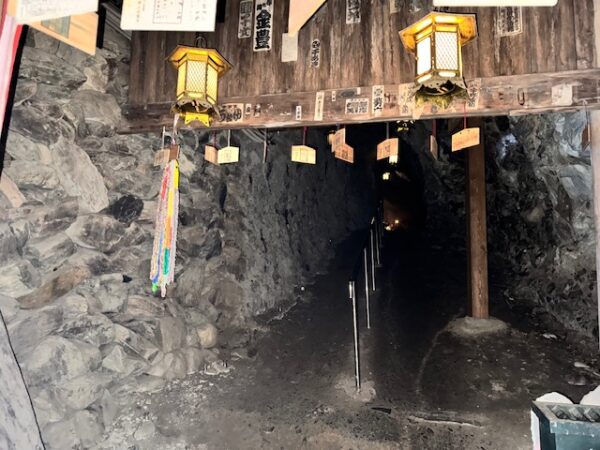
I entered the cave and walked around for a few yards. The air was cool. It was dark with points of light – luminous minerals – further down.
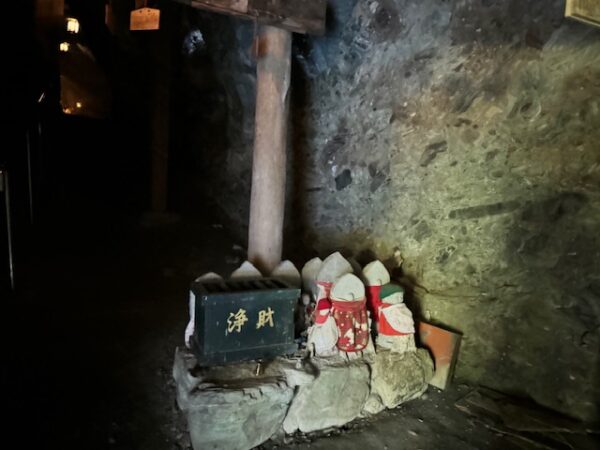
The cave is a sacred place housing carved statues that Kukai placed inside.
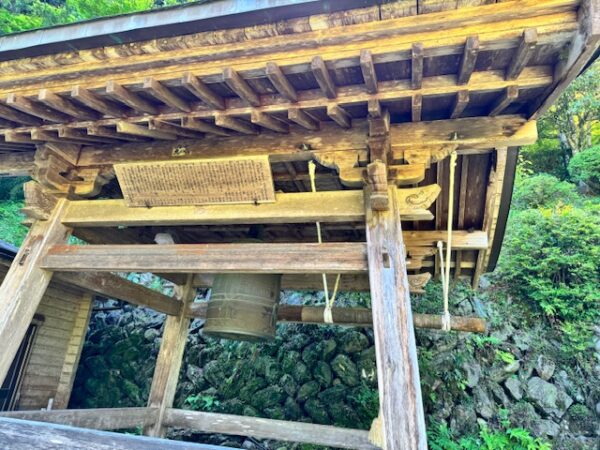
The bell tower is always a welcome sight at a temple.

The look backward through the gate always provides a perspective about possibilities. Just an hour ago, the steps to the cave were a daunting challenge. After reaching the cave, seeing the house embedded in the cliff, then returning…
What would you do if you knew you could not fail? Could you believe that something may be improbable and possible at the same time?
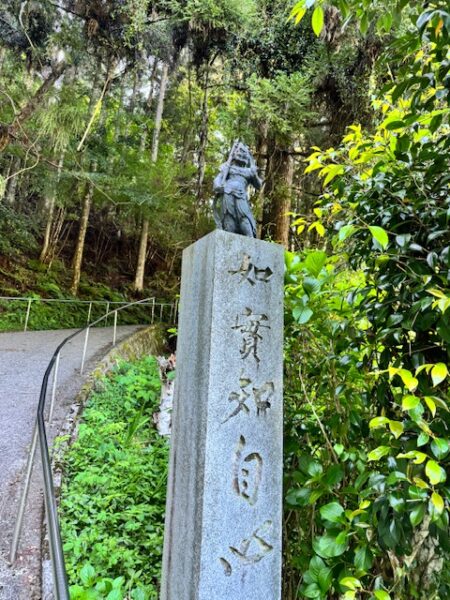
Since number 45 is a round trip temple, the way in is the way out.
See you next time.
Baadaye
Shirley J ♥️
This and several posts this summer will chronicle my pilgrimage in Japan where I walked the 1200 kilometer-long Shikoku 88 temple pilgrimage. Read my announcement here.

T44-45
